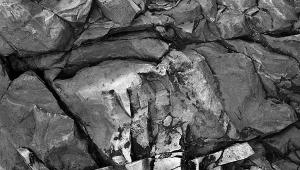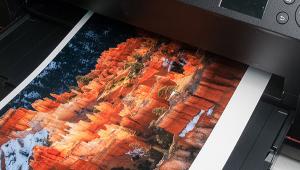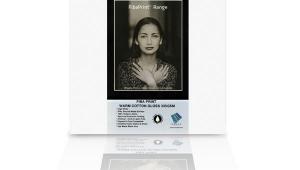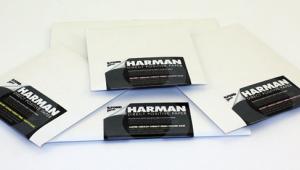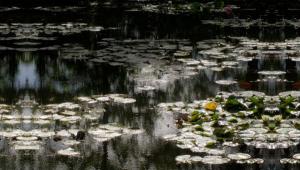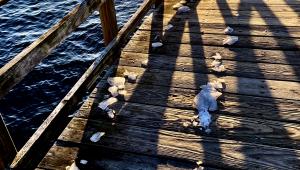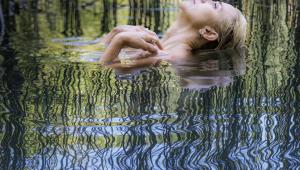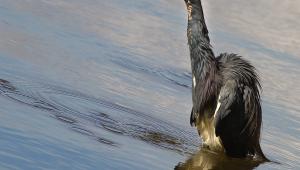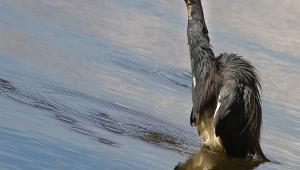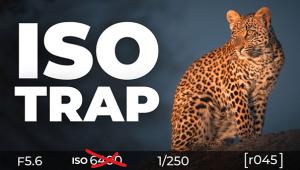Ilford Galerie RC Inkjet Media: Smooth Gloss, Smooth Pearl & Smooth Lustre Duo
The Ilford name certainly echoes for those with a photographic memory, and now the Galerie brand name sits on a host of inkjet media, some fiber-based and quite a few RC-based products, the subjects of this review.
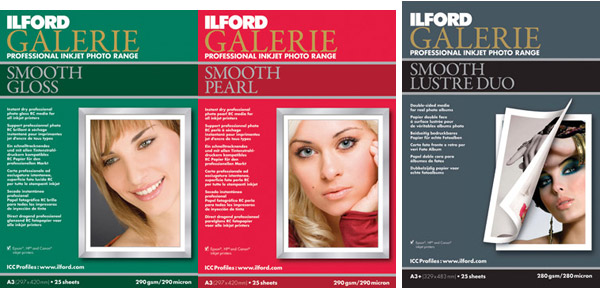
It must be said at the outset that any mention of RC-based papers usually makes printmakers head for the door. The bum rap RC gets is based on first impressions from 40 odd years ago, when it was quite clear that RC (Resin-Coated, plastic) base materials were poor relations used for convenience rather than quality. RC papers in the silver realm came a long way since their first introduction, and now Ilford claims that RC inkjet papers will do as well. While they have a fair amount of proper disclaimers about ink type and storage conditions, they state that when using pigment inks their RC surface papers will not undergo significant fading or discoloration in a range of from 30 to 100 years.
That’s quite a spread, and for the details I suggest you check out their discussions about standards (or continued lack of them in the imaging community), at what point one can say a print is discolored or faded, ink and substrate relationships, printer and paper effects, etc. (For an excellent article on fiber versus RC-based substrates see David Brooks’s piece “The Lowdown on Inkjet Paper” by typing the title in the Search box at www.shutterbug.com.) Also, note that dye-ink printer fade and discoloration claims are within a considerably shorter time frame.

All Photos © George Schaub
RC-based substrate does have some pros to counteract the cons. One item is cost, especially for those in the practice phase of printmaking. It’s great for students and those who expect their prints to be useful for a goodly number of years but not for, as some fiber-based makers claim, up to 200 years when properly stored, etc. The street price on 13x19” Smooth Gloss and Smooth Pearl is under $2 a sheet when purchased in 25-sheet packs, about half that of top-line archival fiber-based papers, with the Smooth Lustre Duo slightly higher.
Although not flimsy, the weight and flexibility of the papers allow them to be loaded in the stack loader of most printers, eliminating the need to single feed each sheet as you have to do with some heftier cotton rag sheets. During testing with my Epson 3800 each of the papers could be stacked 10 deep in the loader and I never got a jam. Those familiar with the finicky 3800 throughput will appreciate this as being more than commonplace behavior.
I did not test using a dye-ink printer because, frankly, I do not own one, but Ilford assures us that this material will behave quite well with those ink sets. This to some degree hampered my testing of the Smooth Gloss because one of my usual test prints contains lots of black areas, which on the gloss surface caused what Ilford dubs “matting” and which I usually call gloss differential. This means that when you turn the print sideways in the light you see a different topography on the color and black ink areas, a gloss in the color areas and a slightly matte surface in the black ink areas. Ilford does recommend that this paper be used with dye printers, where that effect will not occur, or to use a gloss optimizer with the pigment inks, which I did not have available in my test printer but is available in other printers like the Canon PIXMA Pro.

However, when I printed a portrait, a landscape, and a monochrome image on the Smooth Gloss I saw no evidence of matting, and can report that images came out crisp and clean with excellent if somewhat muted colors and very open shadows and tones in the monochrome. Like all papers and printers you have to test a bit. You can always “juice up” colors to your heart’s content by simply amping up the HSL Adjustment Layer and the paper will respond.
I printed using Ilford paper profiles, downloaded from their site at www.ilford.com, and tested them against Epson’s Advanced B&W profile for the monochromes (printer controlled) and Epson Premium Glossy (Photoshop controlled), the latter being recommended by Ilford as the secondary default profile. In general I found the Ilford profile delivered a bit more nuanced color and tone with every surface, although the Epson defaults also did quite well. To me, either is fine given that you tweak the screen image from experience as you go.
The Smooth Pearl surface displayed none of the Smooth Gloss surface’s problems with pigment inks, and each of the test prints were more than satisfactory in terms of color and tone, with the monochrome displaying a very slight taste of magenta using the Ilford profile versus the more neutral Epson Advanced B&W mode and printer-controlled color. Being a sort of half-matte, half-glossy surface, Smooth Pearl will always deliver a slightly flatter or better put more muted color than glossy, something to keep in mind for portraits and bucolic scenes in general.

The Smooth Lustre Duo is a two-sided surface, which is excellent for those wanting to get the most out of their paper when learning the craft, and is touted as being what one would want when creating the individual leaves of a handmade book or album. You have to plan out binding in terms of print borders, and allow the first side to set sufficiently to print on the second, but if album making is your cup of tea then this is the paper for it. I waited an hour before printing an image on the opposite side and all seemed fine, though I got the feeling from reading the Ilford website that perhaps an overnight wait would be preferable. Note that you do not use this paper as leaves of a book that you bend and bind, as that cracks and violates the surface integrity of the material; rather, you use the leaves as individual sheets that you bind sequentially.
What of handling these papers in general? As RC surfaces they are basically an optically porous layer set atop a “flexible” base, and seem quite hardy in terms of printer pass through and loading, given the usual gentle touch all printing materials should receive. They are of the “instant dry” type yet do undergo some changes as they set, so Ilford recommends an overnight layout in the air, uncovered and unframed. I do this with all printing papers anyway.
There is clearly some difference between printing on these papers with a dye-ink and a pigment-ink printer. The dye ink, from my experience, seems to absorb more clearly into the porous surface, while the pigment ink seems to sit a bit more on top, with some absorption to be sure, as if you are printing using a press on art paper. Those working with pigment-ink printers should know this about RC papers in general. It is not a bad look—just something a bit different than you might be used to. The tradeoff between dye and pigment is longevity, of course, with some pigment-ink combos with these papers testing, by Ilford, at 100 years plus, and considerably less with dye inks. We of course have no way of verifying these tests and storage conditions, and even paper/printer/ink combos add to the variability of results.
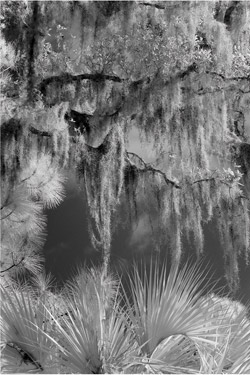
Overall these papers are affordable and of excellent quality, and I would not hesitate to use them for a fine art printing class and for prints that could be shared with others. They are available in popular cut sheet sizes and rolls. Check various retailer websites for sizes, pricing, and delivery.
Some cautionary notes: I would not use these surfaces as prints to be sold through a gallery or website; regardless of the improvements RC has seen through the years the simple fact is that knowledgeable buyers will not purchase “art” prints made on RC papers. I would also not recommend that those with pigment-ink printers consider the Galerie Smooth Gloss, but those with dye-ink printers will find it an excellent surface on which to get sharp and snappy prints. The Smooth Pearl and Smooth Lustre Duo are prime for both dye-ink and pigment-ink printers, especially the Duo, which I found to be a great printing surface in general and a boon for students and crafters in particular.
For more information, visit Ilford’s website at: www.ilford.com.
